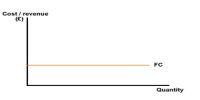A rate of return is the measure of profit as a percentage of investment. The rate returns is another capital budgeting technique that does not involve discounting cash flow the simple rate of return is also known as the accounting rate of return or the unadjusted rate of return. It is the annual income from an investment expressed as a proportion (usually a percentage) of the original investment.
The formula for rate of return is: [(Current price – Original price) / Original price] x 100
The rate of return can also be defined as the net amount of discounted cash flows received on an investment. The percentage can be reflected as a positive, which is considered a gain or profit. When the percentage is negative, it reflects a loss.
The difference between actual incomes (segment margin) earned on an investment and the desired income on the investment, based on the minimum desired rate of return. Absolute profitability measures the impact on the organization’s overall profits of adding or dropping a particular segment such as a product or customer – without making any other changes. Relative profitability is concerned with ranking products, customer, and other business segments to determine which should be emphasized.
















